Manufacturer News
A Case for Hydrogen-Powered Cars
What’s to like about hydrogen, and hydrogen-powered cars? We cannot see taste or even smell hydrogen, yet hydrogen makes up over 90% of matter. The stars and the sun are made up of hydrogen gas. Here on earth, hydrogen forms compounds; compounds are a mixture of elements that we find on the Periodic Table (That’s the big poster found in every science lab at school, which has 120 – or so – little squares with letters that make up the organised Periodic Table with all the known elements in our world.). Hydrogen is found in almost every living thing. Hydrogen gas is used to make chemicals such as ammonia and methane. Hydrogen is in the water that we drink (H2O). Some car manufacturers and scientists have been beavering away developing what is known as hydrogen-powered cars.
Before the car was even invented, hydrogen power had been around and in use in various forms since the 1800s. It was used widely for gas streetlamps back in the day. It was a Welshman, Sir William Robert Grove, who invented the first fuel cell back in 1839. When you use hydrogen in a fuel cell, the only thing you produce is electricity and water!
So, hydrogen-powered cars are vehicles that contain tanks of hydrogen fuel that then combine with oxygen from the air in a process that delivers power to the car for motion. The beauty of the hydrogen-powered vehicle is they produce only water as a waste product.
In a little bit more detail, a hydrogen fuel cell inside a hydrogen-powered car works like this… The fuel cell has a proton exchange membrane that uses compressed hydrogen and oxygen from the air to produce electricity. The hydrogen goes into the membrane at one end called the anode, while oxygen goes into the membrane at the other end called the cathode. A platinum catalyst, which is positioned on the anode end of the membrane, splits the hydrogen into positive protons and negatively charged electrons. The proton exchange membrane takes only the positive ions, while the electrons are fed into a circuit to make electricity. It’s this electricity which is used to drive the car’s electric motor[s]. These electric motors are what provide the driving for the hydrogen-powered car to give them speed and power!
At the cathode end, the positive ions are travelling along the membrane and combining with oxygen from the air to make water (H2O). This water drips out of the car’s exhaust/tailpipe. If you are driving your hydrogen-powered car through a desert and need some water, then you could believably drink it. Now, how green is that!
How can we produce hydrogen for vehicles? Without going into too many details here (I’ll save that for another blog), hydrogen can be produced in mass from a renewable electricity system that uses generation plants like hydro dams, solar power and wind power generators. This purpose-made hydrogen is known as green hydrogen. Australian mining company, Fortescue, has been talking with government recently regarding the creation of a hydrogen production system for Australia as early as 2023/24.
Tiwai point, which you’ll find on the Southern-most tip of New Zealand (NZ makes up Australia’s two biggest islands!), is currently being used as an aluminium smelter. The NZ government is in talks for designing and consenting to converting this smelter into a green hydrogen production plant even as early as 2023.
I think the hydrogen-powered vehicle makes a lot of (green) sense. It would cut down on the need for an endless supply of new battery packs that EVs require, which are made from preciously rare earth’s resources (e.g., lithium, nickle, cobalt…), and the energy and space to dispose of the spent battery packs would be a problem.
Of course, we would need to build up a network of hydrogen refuelling stations across Australia to power this new type of vehicle. This network-building will be easy enough and relatively cheap compared to the massive and costly EV network/upgrade. Green hydrogen fuelling stations could simply be added onto any petrol/diesel refuelling station currently in operation across Australia. This would also ease the changeover period for the general public.
If you are wondering what hydrogen-powered cars might look like, do take a look at the new Toyota Mirai, for an example.

Toyota Mirai

Two of the Most Beautiful Cabriolet Speedsters
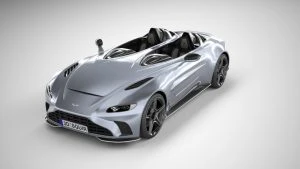
Aston Martin V12 Speedster
Two of the most beautiful cabriolet speedsters of recent times cost a king’s ransom and go like stink. Because most of us will only ever get to read about them, I thought I’d give them a plug here just so we’re all aware that there are still some very extraordinary cars being made. Arguably, and rightly so, these two cars may in your opinion not be quite as exceptional as a McLaren Elva, Chevrolet Corvette Convertible, a BMW Z4 convertible or even a Ferrari SF90 Spider, however if I had a Bentley Mulliner Bacalar or an Aston Martin V12 Speedster parked in my garage I would be especially pleased.
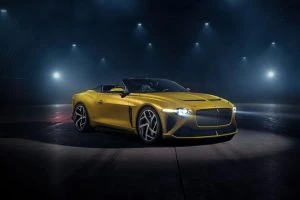
Bentley Mulliner Bacalar
Only 12 of the Bentley Mulliner Bacalars will ever exist, so, as you can imagine, the price tag of one of these is eyewatering (2.8 million AUD). Eighty-eight Aston Martin V12 Speedsters aren’t that many either; they fetch close to 1.5 million dollars new. It is almost inevitable that these two cabriolet cars will sell for more on the second-hand car market just because they are so rare and desirable. However, if you happen to be reading this, and are a squillionaire, then here are two of the most attractive cars on the planet.
Born out of the Bentley Continental stable, under the hood of the Mulliner Bacalar lies a W12 engine that has been fettled to produce 485 kW of power. It sits hunkered down on wider tracks and mesmerizing new wheels, and it boasts carbon-fibre front and rear wings, new light clusters (which look really cool) and a super glitzy centre console. Inside the Bentley Bacalar is a world of luxury and fine materials, as you would expect. Exclusive patterns on the switchgear knurling, for example, are only ever found on the Bacalar models. Then there are the uniquely quilted seats, where each seat boasts as many as 144,199 stitches. The veneer inserts that are used in the wrap-around cabin are from old river-wood trees from East Anglia peat bogs and are 5,500 years old (don’t tell the greenies this!).

Aston, on the other hand, has created a sweeter front end that looks sharper than the more muscular Bentley. Seated down low in the cockpit, the Aston also has the more futuristic dash design, with the chrome-rimmed air vents on the vertical either side of the digital driver’s display. 3-D printed rubber is used throughout the cabin, and then the bar that runs between the seats is a superb feature that looks exciting as well as ensuring strength to the open-top speedster’s on-road rigidity.
Aston’s V12 Speedster uses a potent 5.2-liter twin-turbo V12 that produces 515 kW and 752 Nm of torque. This power is sent to the rear wheels via an eight-speed automatic gearbox and a mechanical limited-slip differential. A 0-100 km/h sprint can be completed in around 3.6 seconds and the top speed arrives at a limited 186 mph (298 km/h). It sounds stunning when the throttle opens out.
The stats are that the Bentley Bacalar can run through the 0-100 km/h sprint in less than 4 seconds, and the 6-litre W12 twin-turbo engine packs 900 Nm of breath-taking torque, capable of hurling you to speeds well in excess of 200 mph (320 Km/h). AWD ensures maximum grip for all occasions, of course.

EVs and the Japanese Manufacturers
I like to get a feel for what is truly happening in the EV world by heading over to the Japanese to see what they are up to. The Japanese make the best cars in the world, at least from a reliability and practical point of view, so it makes sense to me to have a look at what their plans are when it comes to EV innovation, invention and implementation.
Mazda

Mazda MX 30 EV
Mazda is planning to introduce ‘Skyactiv Multi-Solution Scalable Architecture’ for hybrids, PHEVs and EVs in 2022, and they plan to offer three EV models, five PHEV models and five hybrid models sometime between 2022 and 2025. Mazda will also keep hybrids and PHEVs as part of their saleable new cars beyond 2030.
By the end of 2023, Mazda plans to show at least two plug-in hybrids by the end of the year.
In 2026 Mazda plans to show the platform for a new generation of EVs in the early part of the year.
By 2030 Mazda plans to offer a hybrid or electric variant for every model that Mazda has in their line-up. However, even though Mazda will develop a dedicated EV platform by 2025, Mazda’s majority of vehicles beyond 2030 will be hybrids and plug-in hybrids, and, as such, Mazda is not about to stop developing its internal combustion engines anytime soon.
Honda
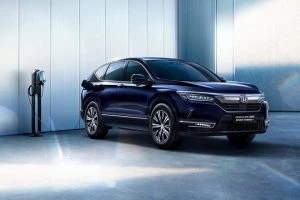
Honda EV Crossover
Honda plans to develop its own solid-state battery tech, rather than relying on outside developers.
By 2023, a Honda EV built in partnership with GM, reportedly a crossover, is expected to enter production.
Honda foresees that 40% of their models will be electric or hydrogen fuel-cell powered by 2030, climbing to 100% by 2040. Honda is one of just a handful of automakers alongside Toyota, Hyundai, and BMW, to devote plenty of their development energy into to hydrogen fuel-cell vehicles.
Toyota
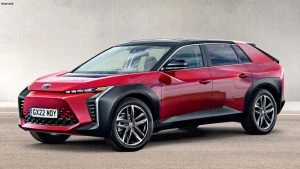
Toyota BZ EV Concept
By 2025, Toyota plans to launch 60 new hybrid, electric, or fuel-cell vehicles by the end of that year, and it also expects to have reached its goal of selling 5.5 million EVs each year. Their dedication to hydrogen fuel-cell vehicles is strong, and they remain big game players in this sort of technology.
Looking across the Tasman (where NZ’s PM, Jacinda Ardern, put her foot in it by claiming that Toyota would be providing EV utes in just 2 more years) it is evident that Toyota will not be putting all their eggs in one basket and going totally bent on EV production. Toyota is adamant that a slow EV uptake is more likely, and hence they would not be giving up on their particularly good hybrid engine technology any time soon.
Nissan

Nissan ids Concept EV
Nissan is the manufacturer of the highly successful Nissan Leaf EV Hatchback, which has been in production for some years now. By 2023, Nissan plans to have launched eight EVs by the end of the year and will be hoping to be on target to sell 1-million hybrid or electric vehicles, globally, per-year. Nissan states that their hybrid technology and their technology to improve their internal combustion engines won’t be stopping before 2030, at least.
Mitsubishi
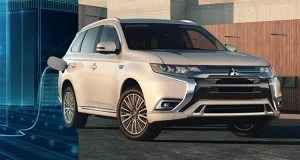
Mitsubishi Outlander PHEV
Mitsubishi has the marvellous Outlander PHEV, which has been in production for many years now. By 2030, Mitsubishi plans for 50% of its global sales to come from hybrid or electric vehicles. I guess that leaves 50% to be still made up of efficient internal combustion vehicles.
Subaru
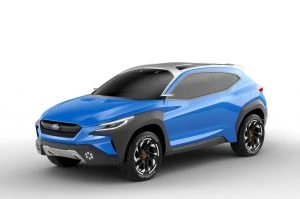
Subaru Solterra EV Concept
Subaru, by 2030, expects 40% of its global sales to come from hybrid or electric vehicles. By 2035, Subaru plans to have a hybrid or electric version of every vehicle in its line-up. Subaru seems to be singing off a similar song sheet to Toyota, where they both suggest that the hybrid vehicle will prove to be more popular in the short term, particularly as the EV infrastructure has a long way to go.
By 2050, Mazda, Mitsubishi, and Nissan have made bold plans to reach net-zero carbon emissions.
The big questions are: Will the EV-charging infrastructure match the manufacturer claims? Will people be able to afford an EV, let alone the huge cost to make their home charge ready, as the ideologically bold demands that some governments introduce along with big taxes? Who is going to pay for all of this?
I read a recent comment where a reader of ‘Car and Driver’ made a very informed comment:
“It’s a ‘no thanks’ on Li batteries from me. Lithium extraction has already spoiled the Atacama desert in Chile and now they have their sights set on the American West. I can reduce my CO2 footprint far more by just driving less than by purchasing a 100 kWh battery, and the 10-20T of CO2 that was released to make it. I’ll wait for fuel cells. As a Toyota driver… I have time.”
When ADAS Features Fail

I don’t quite know why I’ve become more attentive to learning about a car’s ability to protect its occupants in the event of a collision, along with its ability to avoid the collision altogether in the first place. I expect it has a lot to do with having close family members who occasionally need to drive themselves places. Advanced Driver-Assistance Systems (ADAS) are growing in popularity. ADAS systems can help prevent accidents not only at speed, but also when parked as a stationary car. ADAS features are designed with one purpose in mind and that is to increase driver and occupant safety.
ADAS features include things like automatic emergency braking, blind spot detection, collision warning systems, cross-traffic alert, forward and rear collision warning, lane departure warning, lane keeping assist, park assist, pedestrian detection and avoidance systems, cyclist detection and avoidance systems, road sign recognition, active radar cruise control… and the list goes on. ADAS employs cameras and sensors to detect a potential collision or event and then proceed to activate systems of avoidance if necessary. These are important safety features which help prevent accidents.
Research on insurance claims that was carried out by LexisNexis Risk Solutions showed that vehicles involved in incidents that had ADAS on-board exhibited a 27% reduction in the frequency of claims made for bodily injury. The results also showed that vehicles that had ADAS on-board exhibited a 19% reduction in the frequency of claims made for property damage. Obviously, this would suggest that the systems must be doing some good.
A study by the Insurance Institute for Highway Safety (IIHS) revealed that the crash involvement rate for vehicles with blind-spot monitoring was 14% lower than for the same vehicle without the equipment. Researchers also stated that the study also suggested that if every vehicle sold in the US in 2015 was equipped with blind-spot monitoring, 50,000 crashes and 16,000 crash injuries might have been prevented.
At present, one of the big downsides of the ADAS features is that they are darn expensive. Not only do they put the price of a new car up, they also make the car costlier to insure because if any of the systems gets damaged the insurance and repair bills are usually eye-watering. Hopefully, ADAS features will come way down in price and become similar to standard computer software and technology which is, on the whole, a dime-a-dozen now.
The other thing is that I hope ADAS will function 100% of the time correctly as intended, because vehicles designed to be able to automatically brake for objects such as other cars, pedestrians, and cyclists, and to drive themselves inside highway lanes without driver input, is not an exact science. A slightly frightening example of my concern here is when Volvo was demonstrating its pedestrian AEB technology to journalists in 2016. Volvo used their V60 model in the demonstration, where it was travelling toward a dummy named Bob. The V60 didn’t detect Bob being in the way, and so Bob was hit in what was a controlled environment. An alert driver in the V60 may well have returned a better outcome.
Then shortly after, another Volvo V60 was demonstrating its collision detection and avoidance system where it was to avoid hitting a stationary truck. The failure to detect and avoid the collision can be seen here: https://www.youtube.com/watch?v=aNi17YLnZpg
Again, an alert and competent driver could well have resulted in a better outcome, should this have happened in the real world.
In 2018, the IIHS took five new vehicles and tested them. The Tesla Model 3, the Tesla Model S, the BMW 5 Series, the Mercedes E-Class and the Volvo S90 were the test vehicles. Each vehicle’s AEB, adaptive cruise control and lane-keeping assist systems were tested. Some of the problems IIHS encountered was that the AEB didn’t actually work in some vehicles in some circumstances.
In other tests, the IIHS observed: “The BMW 5-series steered toward or across the lane line regularly, requiring drivers to override the steering support to get it back on track. Sometimes the car disengaged steering assistance on its own. The car failed to stay in the lane on all 14 valid trials. The Model S was also errant in the hill tests.”
Sadly, just a couple of years ago an autonomous Uber fitted with even more sensors than any standard ADAS-equipped road car killed a pedestrian at night in the US. This happened while researchers and designers were conducting public testing. What this suggests is that the ADAS technology is amazing and good enough to be placed into new cars. However, it doesn’t mean ADAS will always work as intended, and it does point to the fact that drivers must still always be fully alert at the wheel. If the driver is not fully alert, the outcome from these system fails can sometimes be way worse than if the driver was fractionally slower to manually override the systems detection time and action times.
I’ve heard of numerous occasions when vehicles have falsely detected situations. A more common fail is when accident emergency braking (AEB) engaged on-board a car when it shouldn’t have, which meant that the AEB stopped the vehicle abruptly and unexpectedly on a clear road. At the time, traffic is still coming up behind the vehicle. Lane keep assist isn’t always that great either, and the results of a high-speed mishap on a main highway is tragic.
ANCAP is Australian’s big car-safety tester, and a recent representative suggested that AEB and lane-keeping assist technology, which is where the car will steer itself, was beginning to be put under the microscope. This would test for how accurate the system actually is, and if it would actually do the opposite and steer the vehicles into a dangerous situation. Testing ADAS features should take priority over just saying that the technology is available in the car at the time of crash testing, whereby the appropriate ADAS feature box is ticked and the job done.
ADAS mostly works for the better. It does raise obvious safety problems, particularly when manufacturers have all the pressure to pack in as many ADAS features into their vehicles as possible for as little cost as possible to remain competitive on the sales front. This pressure would suggest that these systems could be prone to potentially become unsafe.
With cars loaded with ADAS features, you could also say that drivers of these new vehicles might be tempted to hop on the mobile phone to check messages once they have activated the adaptive cruise control and lane-keep assist systems. Essentially, it becomes easier to break the law; which takes us back to the point that we shouldn’t rely heavily on ADAS technology because it can fail to work. We don’t often hear this preached at the car sales yard or on new-car adverts.
In Australia, features such as antilock brakes (ABS) and electronic stability control (ESC) are mandatory in new vehicles that are sold to the public. These mandatory requirements are set to be pushed to the next level, where automatic emergency braking (AEB), adaptive cruise control and lane-keeping assist would have to be on-board any new vehicle being sold to the public. Even alcohol detection devices may well be part of these standard requirements. Europe is set to introduce some of these requirements over the next few years, and Australia is likely to follow the lead. Newly imported European cars would end up with these features anyways, a win-win for us new-car buyers.
ADAS is good, but we still need to drive our cars.